Morning Markets: SoftBank’s earnings report wasn’t great as the bill from WeWork’s implosion came due. However, SoftBank has a plan for the future and it’s here to explain it to you.
We’ll start with my (Alex’s) take and then see what Sophia has to say.
I want to be very clear upfront that I love SoftBank’s latest slideshow. I say that with no malice, no sarcasm, nothing. I mean it.
Subscribe to the Crunchbase Daily
The deck came out as part of the Japanese conglomerate’s earnings report that we touched on yesterday, the same report that detailed the cost of WeWork’s stumble and quick staunching. SoftBank’s Masayoshi Son has expressed public contrition about the investment but appears optimistic about not only the broader Vision Fund portfolio (more here) but also the chances of WeWork to work out.
You can see the argument in the slides, which you can read in entirety here. I recommend it. For the time-strapped, I’ve included the best (from our view) in terms of their bald honesty, simple distillation of business truths, and optimism. Those are three of my favorite things, so perhaps it isn’t a huge surprise that I dig what SoftBank presented.
Without further ado, let’s PowerPoint.
WeWork
Let’s start with some WeWork-related slides. Here’s a piece of the deck detailing an issue that WeWork had heading into its IPO:
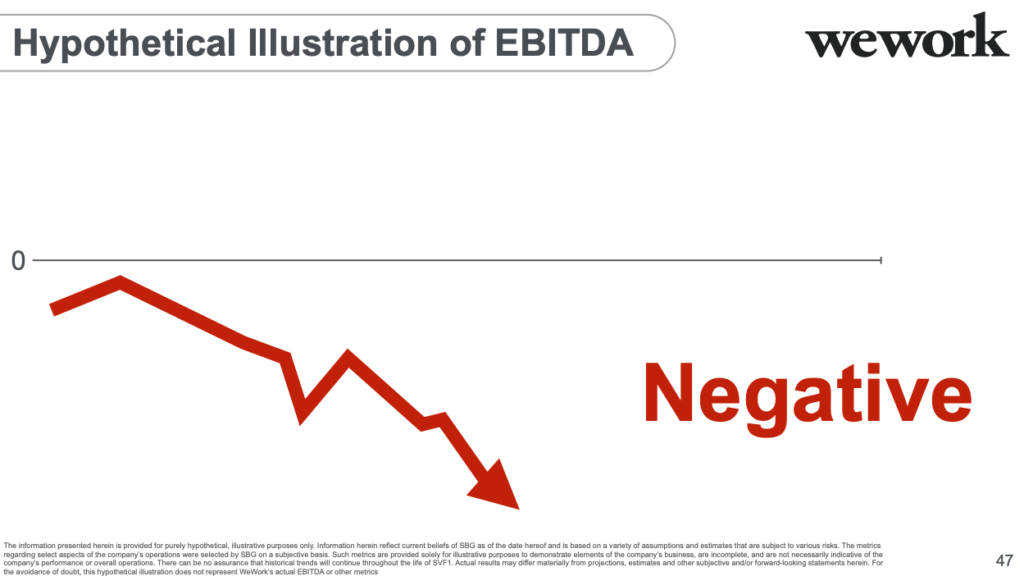
That chart is valid, honest, and correctly color-coded to represent increasingly negative EBITDA, something that WeWork has generated oceans of through time.
Why did the company generate so much negative EBITDA? Fundamentally WeWork was a low gross-margin business that had high operating costs, leading to sharply negative adjusted profit. SoftBank spells this out:
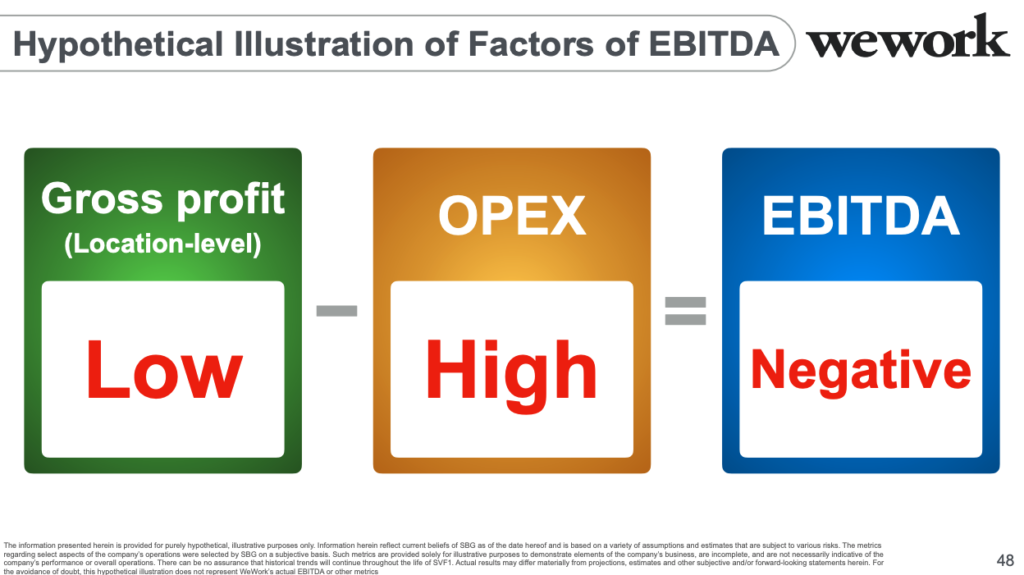
Fact-check? True.
To solve the issues SoftBank intends to boost profit while limiting operating expenses. That’s a good recipe frankly, and probably the only way that WeWork can survive. To pull that off, SoftBank details three moves, namely stopping the build-out of new coworking spaces, “cost reduction,” and the “sort[ing] out [of] unprofitable business[es].”
The result of which the company hopes will lead to this sort of result:

I don’t raise that chart merely to underline how much I enjoy it. The rising gross profit line forms the crux of SoftBank’s argument regarding turning WeWork around. Later, the company shows the impact of lowering operating expenses against rising gross profit:
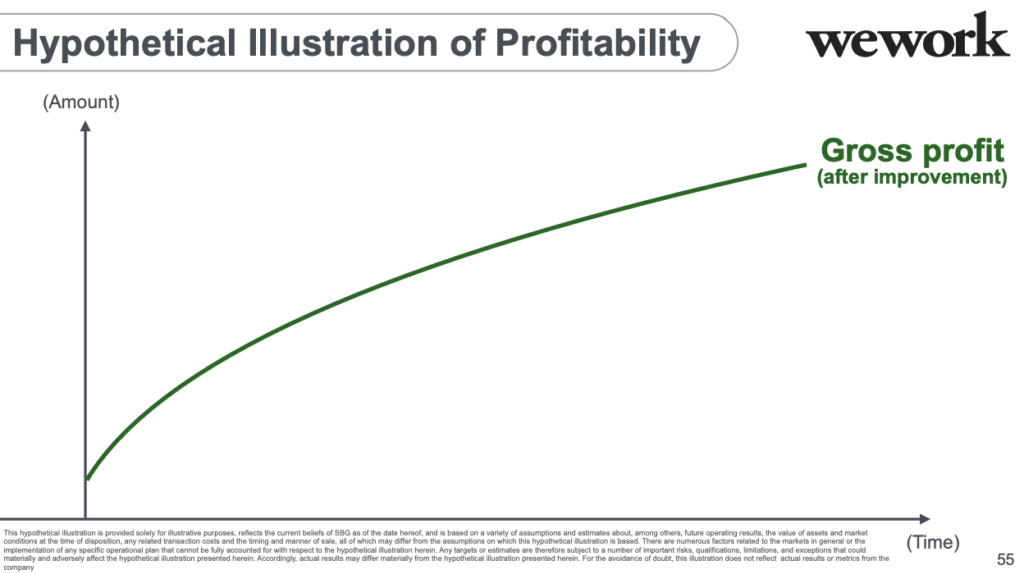
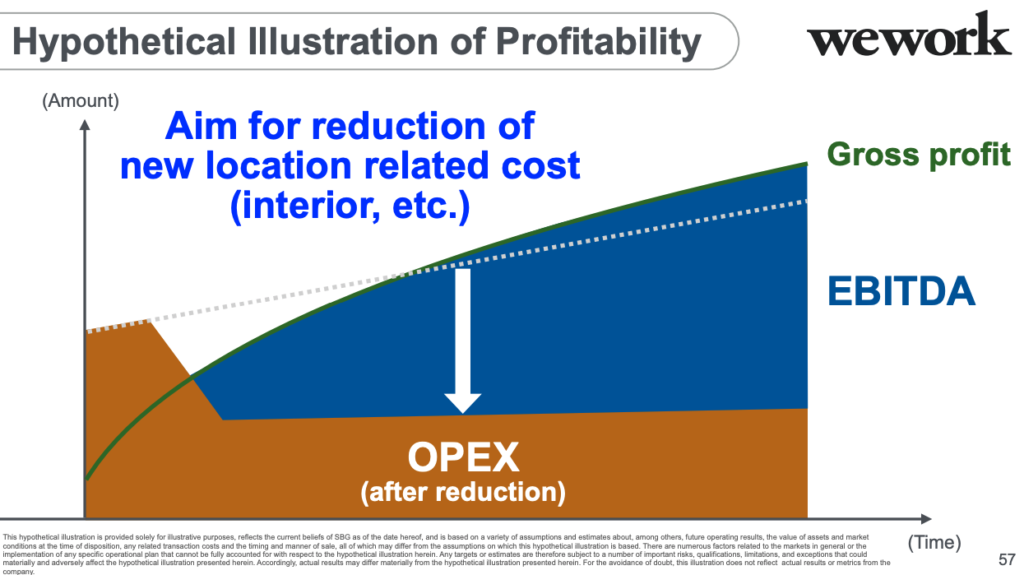
What’s the result? The flip of our first chart:
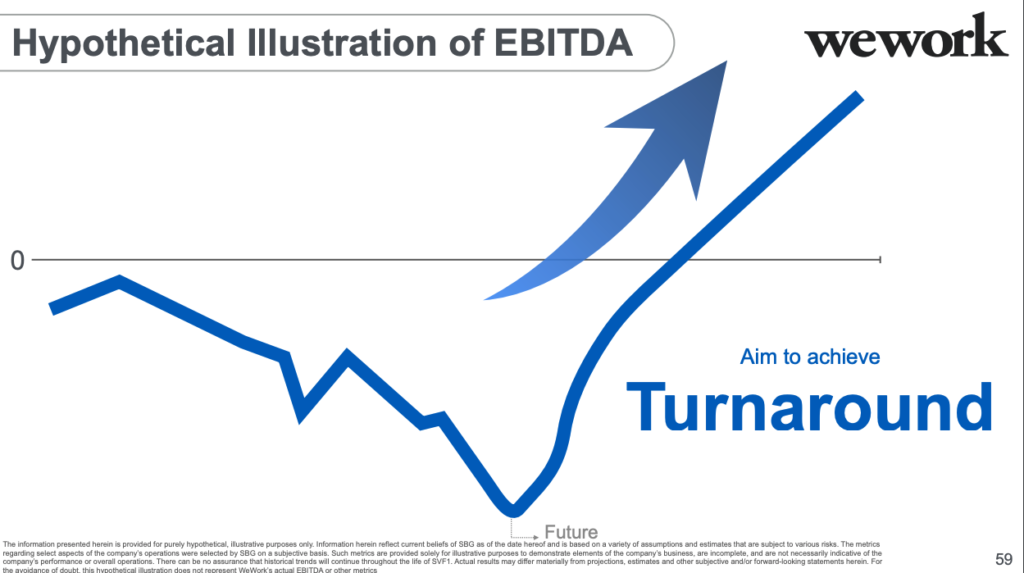
Other Brilliance
This column is supposed to be short, pithy, and useful. In that spirit let’s limit ourselves to just three more slides.
The first of our final three details a business concept that I’ve actually tried to explain using words to little effect. Sometimes images are better than words, something that pains me to admit as a writer. Still, this is a slide I intend on saving and using later on (though with FCF swapped out):

For our penultimate chart, an image from the middle of an argument about the future of the value of AI-related companies, using historical Internet trends paired with market cap data to make a point about growth. The argument in the following chart is easy to grok: Internet traffic (use) and Internet company market cap (resulting value) have risen in tandem.
And, as the amount of data stored in the world goes up (magenta line, right chart) the value of AI companies will rise (green line, right chart). This probably isn’t untrue. But what makes the chart fun is that this is the sort of thing you see from companies at Y Combinator, brimming with enthusiasm for the future. You don’t usually get this sort of stoked-ness from folks who might have another $100 billion to invest in short order.
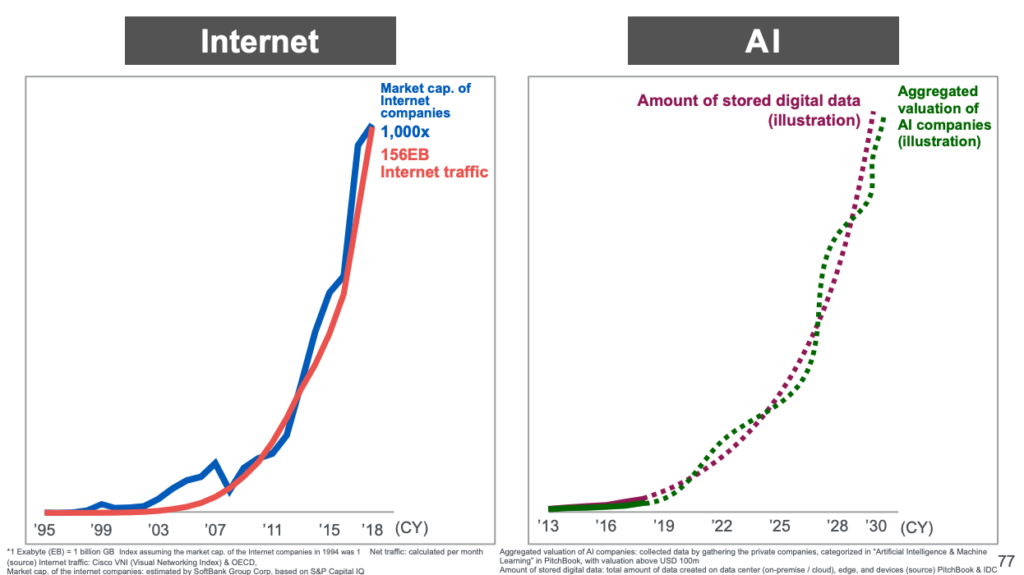
Finally, the best slide of all. Son and SoftBank and the Vision Fund aren’t going to let the WeWork fiasco slow them done. Instead, it’s Damn the torpedos, full speed ahead!

Sophia’s Take
First of all, I am also a fan of the honesty in this slideshow. I don’t want to give SoftBank too much credit for doing what they’re supposed to do (i.e. not lying to their shareholders), but I do appreciate that they don’t mince words, perhaps best illustrated with this slide:
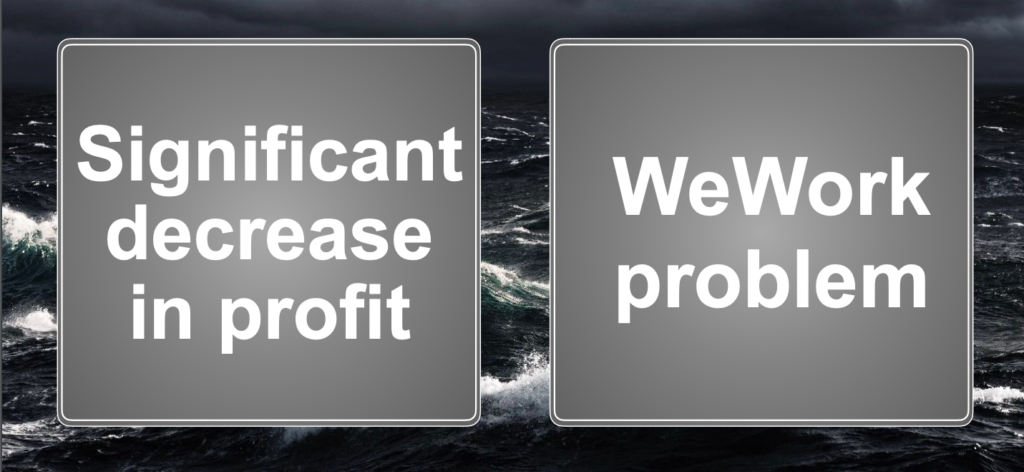
Kudos for not calling it the “WeWork opportunity.”
Anyway, I found the slides mentioned above interesting as well, but it was also useful to see what SoftBank had planned for turning WeWork around. Much of what’s in a slide that Alex summarized above, which confirms earlier reporting by various news outlets.
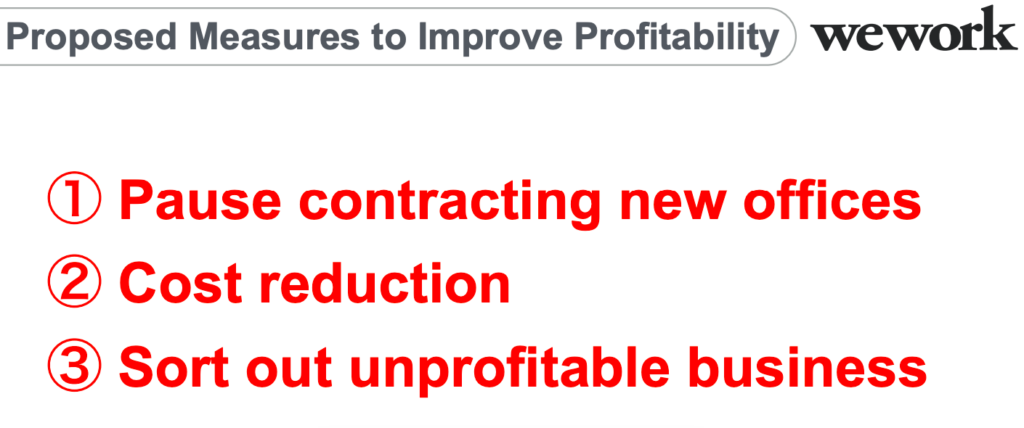
The first point seemingly confirms earlier reporting by the Financial Times that WeWork planned on scaling back in some areas (FT reported that it would be China, India and Latin America, and the company would focus on U.S., European, and Japanese operations).
The second point we’ve known was coming, we just don’t know how big it’s coming. Layoffs, that is. WeWork’s new executive chairman Marcelo Claure said in an all-hands meeting that there would be layoffs, but he was unsure how many people would be cut. News reports indicate that it could be up to 4,000 people of WeWork’s approximately 15,000-person company. In what other way SoftBank intends on cutting costs besides slashing the headcount is unclear. Maybe they’ll cut perks as well.
The third point makes a lot of sense — WeWork needs to get rid of its unprofitable businesses if it ever wants to turn a profit. According to Crunchbase, WeWork has acquired 18 companies to date (more here on the company’s old acquisition methods). That’s a lot for startup, especially one that’s burning cash like WeWork. It’d be more helpful to see what parts of the business SoftBank was considering reducing or cutting, but that’s for another slideshow.
Illustration: Dom Guzman

Stay up to date with recent funding rounds, acquisitions, and more with the Crunchbase Daily.




![Europe Quarterly Graphic - 2024 [Dom Guzman]](https://news.crunchbase.com/wp-content/uploads/Quarterly-Cowboy-Europe-470x352.jpg)

![Illustration of a guy watering plants with a blocked hose - Global [Dom Guzman]](https://news.crunchbase.com/wp-content/uploads/quarterly-global-3-300x168.jpg)
67.1K Followers